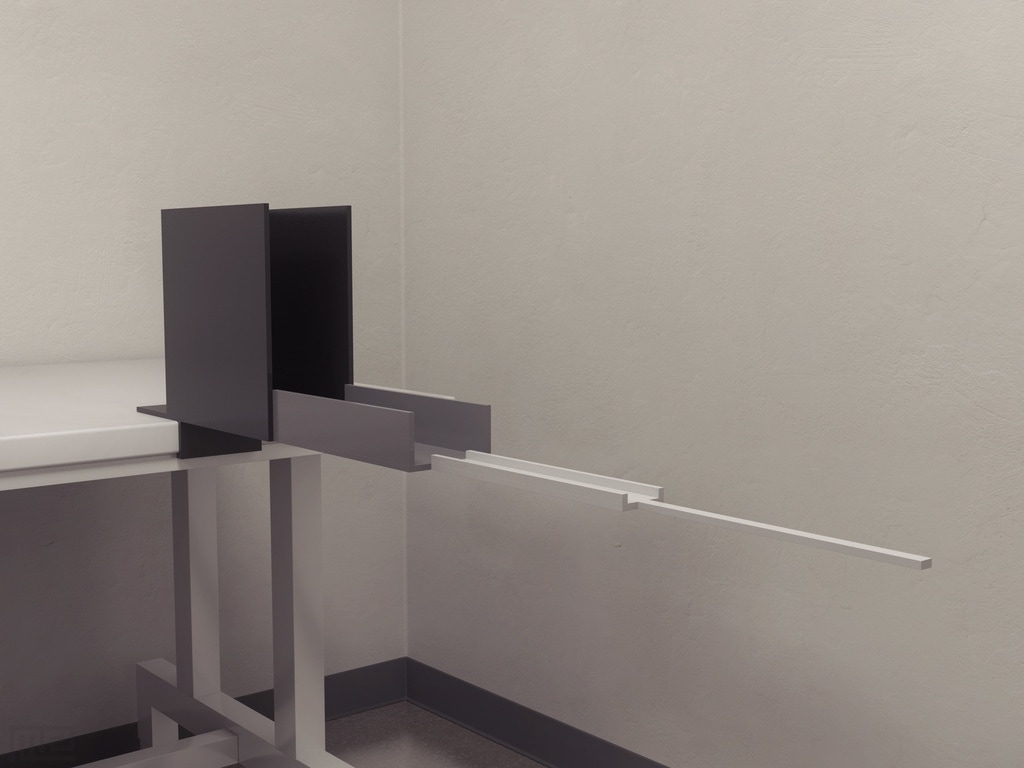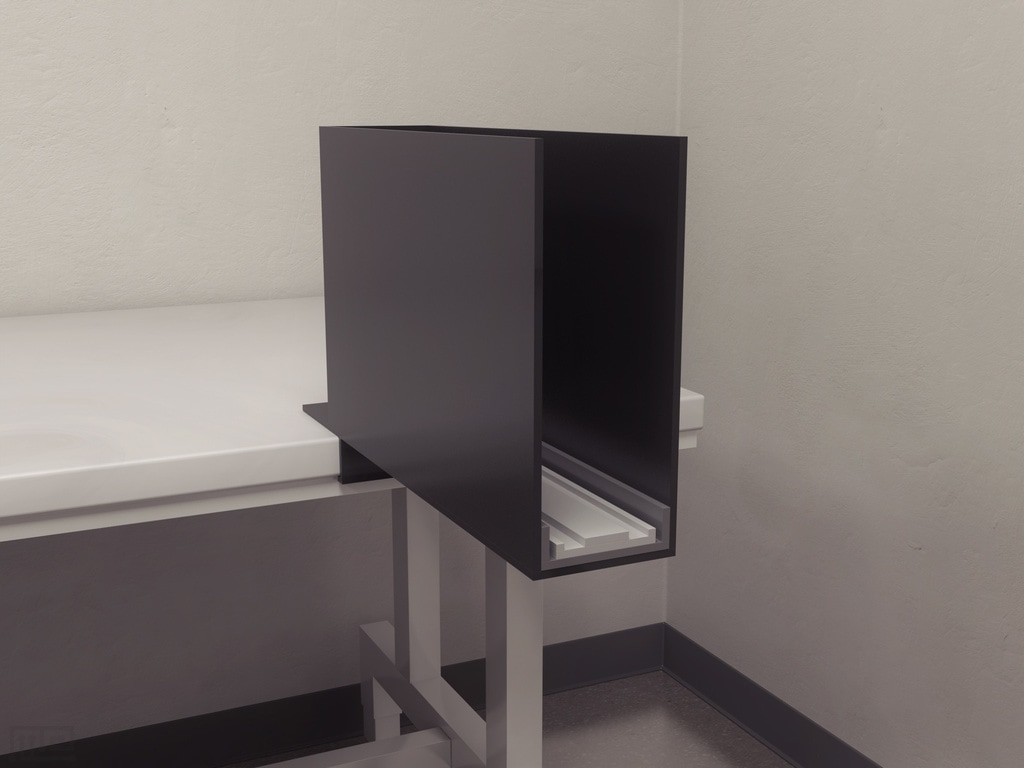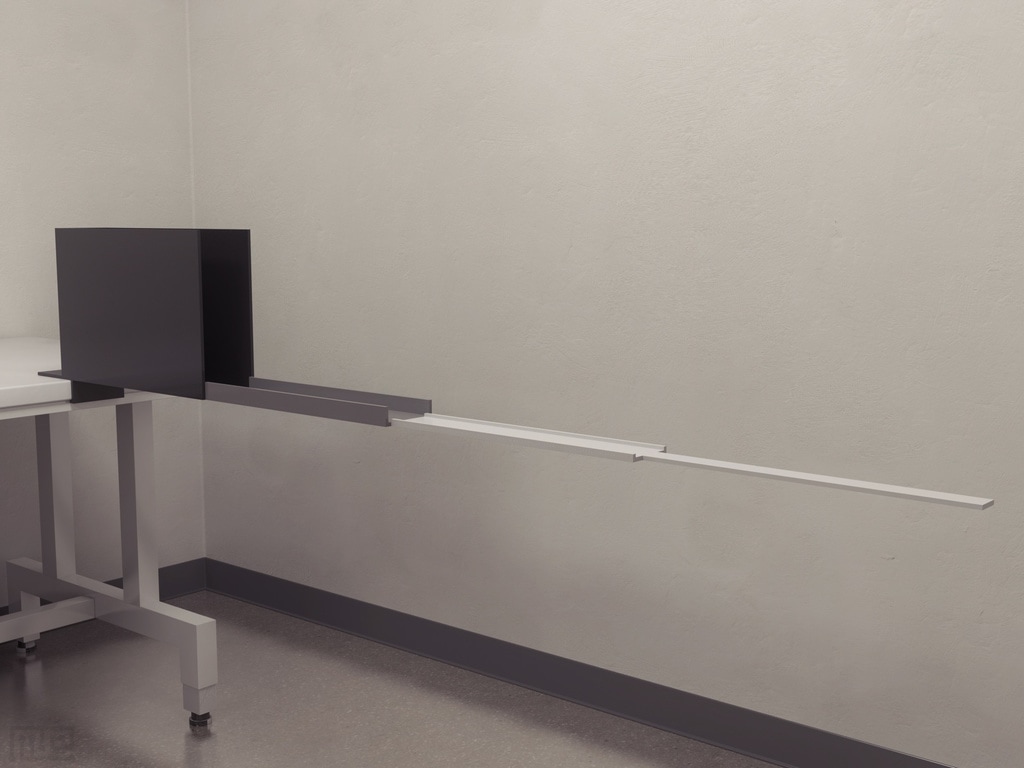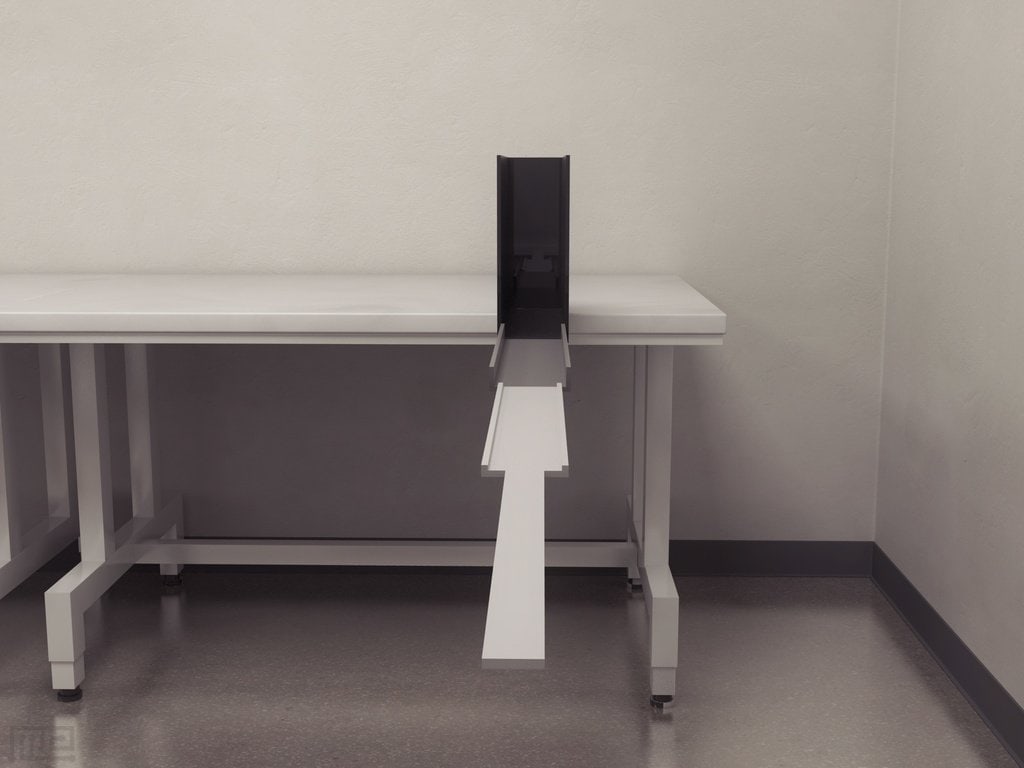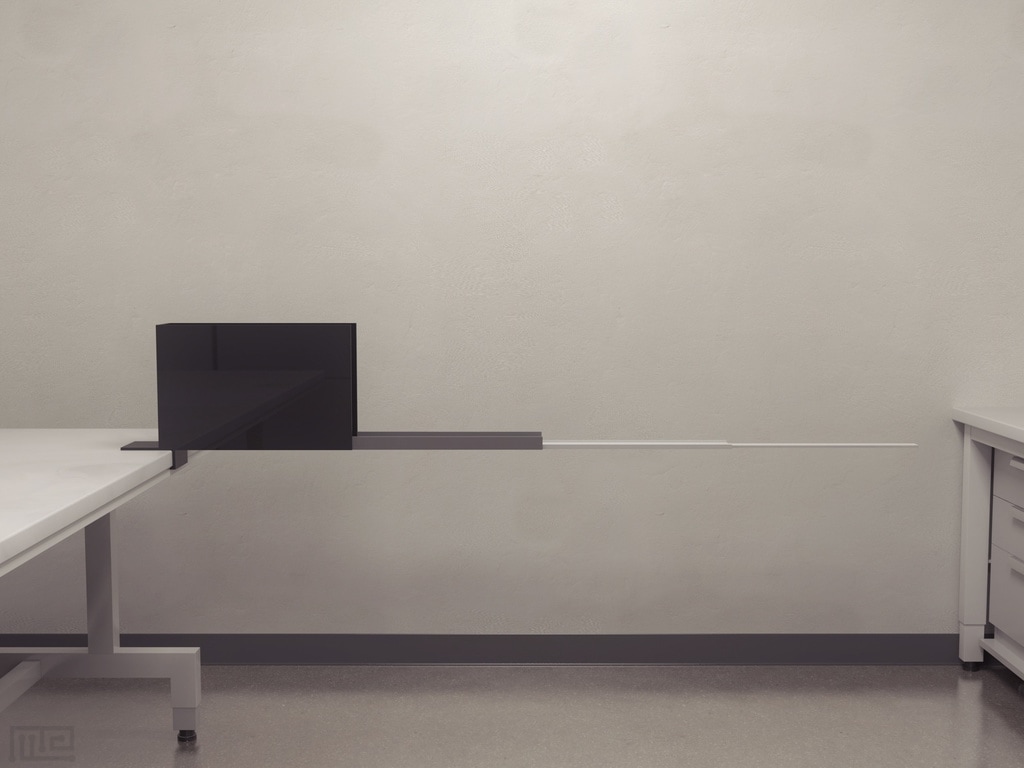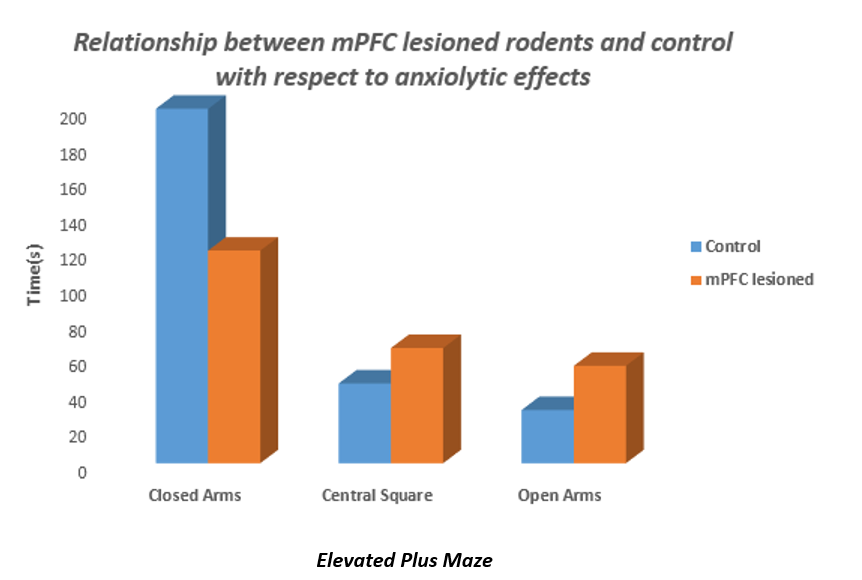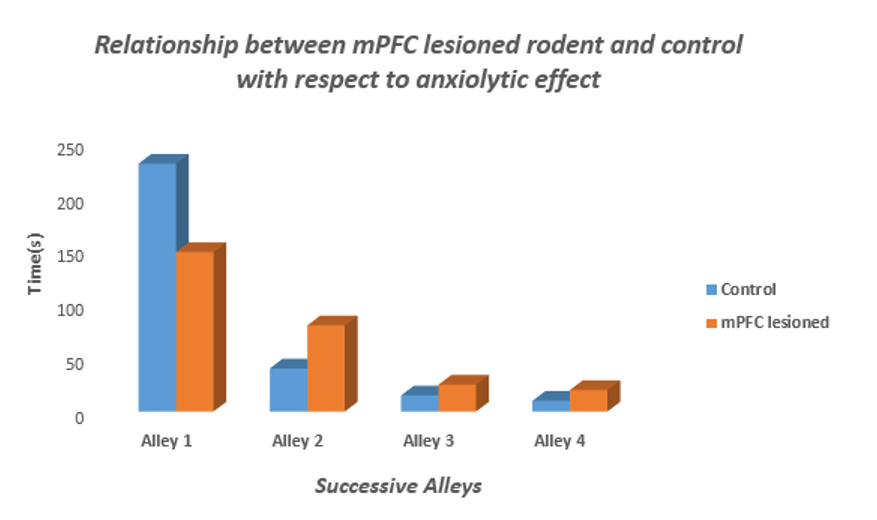Description
The Successive alleys test is a novel anxiety test that utilizes fear of open spaces as an assay. The most distal regions are white, open and narrow, which creates an anxiogenic environment. The most proximal, dark areas create anxiogenic areas that encourage natural aversion of open spaces. The MazeEngineers successive alleys apparatus allows for easy attachment to laboratory benches. The entire assay can be detached to easy storage and cleaning.
Price & Dimensions
Mouse
$ 1590
Per Month- Total Length: 25cm
- Alley 1: Length: 25cm; Width: 8.5cm; Wall height: 25cm; Color: Black.
- Alley 2: Length: 25cm; Width: 8.5cm; Wall height: 5cm; Color: Grey.
- Alley 3: Length: 25cm; Width 3.5cm; Wall height: 0.8cm; Color: White
- Alley 4: Length: 25cm; Width: 1.2cm; Wall Height: 0.2cm; Color: White
Rat
$ 1790
Per Month- Total Length: 45cm.
- Alley 1: Length: 45cm; Width: 9.0cm; Wall height: 29cm, Color: Black.
- Alley 2: Length: 45cm; Width: 9.0cm; Wall height: 2.5cm, Color: Grey.
- Alley 3: Length: 45cm; Width 6.7cm; Wall height: 0.5cm, Color: White
- Alley 4: Length: 45cm; Width: 3.5cm; Wall Height: 0.3cm, Color: White
Documentation
Introduction
Successive alleys test is a broadly applicable paradigm used to evaluate sensorimotor and anxiety-like behaviors in rodents. (Deacon and Contet et.al 2001). Besides the sensorimotor behavior(locomotion), the successive alleys apparatus can be employed to evaluate different indices of anxiety such as Dim/Bright contrast, Enclosed/Open contrast, and defecation scores.
It can also be employed to investigate the effects of anxiolytic drugs. Furthermore, studies regarding hippocampal complex and medial prefrontal cortex (mPFC) lesioned subjects can also be conducted with the help of successive alleys. This makes the successive alleys apparatus unique and highly applicable to many different applications.
The apparatus is comprised of four linearly arranged alleys, sorted by the increasing order of anxiogenic stimulus evident by color and width. The starting alley (Alley 1) is widest and darkest in color whereas the last alley (Alley 4) is narrowest and white in color.
Successive alleys task is a blend of elevated plus maze (Lister 1987), light-dark box (Crawley 1981), and open field emergence test (Anderson 1938).
In Successive alleys test, the color, height of the walls, and width of the alley is varied with the purpose to incorporate the principles of open field emergence test, light-dark box, and elevated plus maze. Firstly, by initiating the experiment in the enclosed alley, an emergence component is incorporated. Secondly, the color of the alleys changes from black (Alley 1) to gray (Alley 2) to white (Alley 3 and 4). This exploits the natural tendency of the rodents to prefer dark areas over light areas as illustrated by the light-dark box test. Last but not the least, unlike elevated plus maze, the height of the walls of successive alleys are progressively decreased to gradually enhance the exposure of the subjects to the apparatus. Successive alleys task is a combination of all these factors; intended to enhance the sensitivity and applicability of the apparatus to a wide range of anxiety-like behaviors.
An exceptional advantage of the successive alley task is the elimination of central square of plus maze that gives rise to interpretational difficulties. (Shepherd and Grewal et.al 1994)
Robert M.J. Deacon made major contributions towards the apparatus. He utilized the apparatus to investigate numerous studies such as differentiating different strains of mice on the basis of sensorimotor and anxiety-like behaviors. (Deacon and Contet et.al 2001)
Apparatus and Equipment
The apparatus consists of four sequential linearly arranged alleys made up of acrylic. The apparatus can be easily attached to support such as bench/shelf approx. 50 cm above the ground. The open end of the first alley should be kept approx. 10 cm away from the support so that the subject could not escape the testing apparatus.
It is arranged in an increasing order of anxiogenic properties with Alley 1 the safest and Alley 4 the most dangerous in terms of anxiogenic properties. For safety purposes, the floor should be adequately padded in case of falls from the apparatus.
The apparatus should be carefully attached to the support so that the alleys do not vibrate with the movement of the subjects. Additionally, adequate care is required for alley 4 as it is prone to damage because of narrowness. To curtail these difficulties, an additional support could be provided throughout the length of the apparatus.
Training Protocol
Pre-training for successive alleys
Before testing, the subjects are brought to the experimental room for acclimation. For evaluating behavior on the novel apparatus, the subjects should be provided with slight but uniform odor cues. Before testing the experimental subjects, non-experimental subjects are placed on the apparatus for odor cues. After some time, the non-experimental subjects are removed and the test apparatus is cleaned with damp, followed by dry tissue.
At the start of the experiment, the subject is introduced into the enclosed alley facing the wall and allowed to explore the apparatus freely. The main objective of the test is to quantify the latency to enter successive alleys, the number of entries into each alley and the total time spent there. Furthermore, the defecation score is also measured.
The time is recorded with the help of a stopwatch containing four buttons, each linked to an alley. The button 1 is pressed for recording time of the first alley and upon releasing the button the time is stopped. The time should be stopped when all the four paws of the subjects enter the successive alley. The same procedure can be employed to record the entries and latencies of the successive alleys.
The usual test duration is approx. 5 minutes, but if the subject is markedly anxious, shortening the duration of the test may prove to be beneficial. If the subject falls off of the apparatus, the time tracking should be stopped immediately, and the subject should be placed on the same alley from which it has fallen facing the enclosed alley (Alley 1). After testing, remove the subject and disinfect the apparatus for further testing.
Evaluation of sensorimotor behavior
Successive alleys can be used to assess sensorimotor behaviors in rodents. The number of entries acts as an indicator of sensorimotor behavior.
Evaluation of anxiety-like behaviors
Successive alleys test is also used to evaluate different indices of anxiety such as Dim/bright contrast, Enclosed/Open contrast, and defecation scores. These indices of anxiety provide ample data in determining the anxiety-like behaviors.
Modifications
Initially, the apparatus was employed for studies in mice. (Deacon and Contet et.al 2001; Deacon and Brook et.al 2006) Later, Deacon modified the apparatus for study in rats as well. Presently, the apparatus can be used both for mice and rats, and the only difference lies in the dimensions of the apparatus. (Deacon 2013).
Sample Data
The sample data is represented by plotting the relationship between mPFC lesioned rodents and control with respect to anxiolytic effects in both elevated plus maze and successive alleys.
It is evident from the graph that mPFC lesioned subjects made more entries into the successive alleys and open arms of the elevated plus-maze relevant to control group. Surprisingly, the entries into the closed arms in elevated plus maze are less than that of controls.
Strengths & Limitations
Strengths
The remarkable strength of the successive alleys task is the eradication of central square. In elevated plus maze, time spent in the central square was considered as ‘decision making, ‘ and the results were drastically affected especially when anxiety-like behaviors were under consideration.
The combined use of successive alleys and elevated plus can eliminate false positive or false negatives that greatly affects the interpretational results. This is because these two tasks are not functionally similar, although they are identical.
Limitations
The time is recorded manually which makes it prone to errors. The video tracking system is difficult to employ because of the contrasting colors of floor and alleys. However, this problem can be solved by painting the floors same as that of alleys.
Summary and Key Points
- Successive alleys test is a broadly applicable paradigm
- It is used to evaluate sensorimotor behaviors, anxiety-like behaviors, pharmacological effects of anxiolytic agent
- It can also be employed for the studies of hippocampal complex and medial prefrontal cortex lesioned rodents
- The apparatus consists of four sequential linearly arranged alleys made up of painted wood
- The eradication of central square makes it unique
References
Contet C, Rawlins JN, Deacon RM. A comparison of 129s2/svhsd and c57bl/6jolahsd mice on a test battery assessing sensorimotor, affective and cognitive behaviours: Implications for the study of genetically modified mice. Behavioural Brain Research 124, 33–46 (2001)
Deacon, R.M.J., Brook, R.C., Meyer, D., Haeckel, O, Ashcroft, F.M., Miki, T., Seino, S., & Liss, B. Behavioral phenotyping of mice lacking the KATP channel subunit Kir6.2 Physiol. Behav. 87, 723-733 (2006)
Deacon, R.M. The Successive Alleys Test of Anxiety in Mice and Rats. J. Vis. Exp. (76), (2013)
Anderson EE. The interrelationships of the drives in male albino rats. III. Interrelations among measures of emotional, sexual and exploratory behaviour. J Genet Psychol 5 ,335–52 (1938)
Crawley JN. Preliminary report of a simple animal behavior model for the anxiolytic effects of benzodiazepines. Pharmacol Biochem Behav 15, 695–9 (1981)
Lister RG. The use of a plus-maze to measure anxiety in the mouse. Psychopharmacology 92, 180–5 (1987)
Shepherd J, Grewal SS, Fletcher A, Bill DJ, Dourish CT. Behavioural and pharmacological characterisation of the elevated ‘zero-maze’ as an animal model of anxiety. Psychopharmacology 116, 56–64 (1994)

